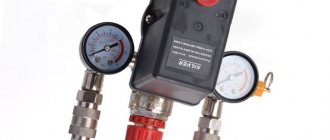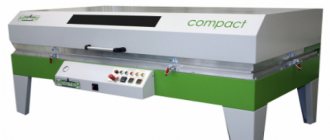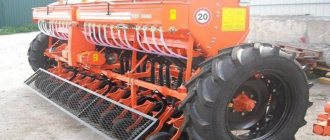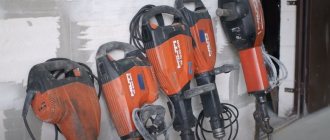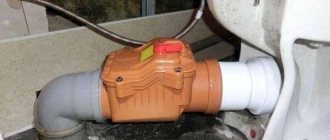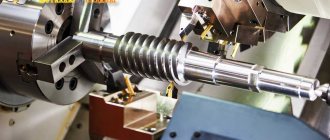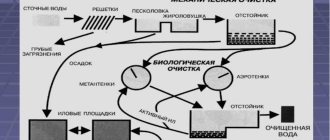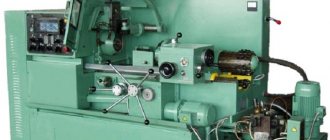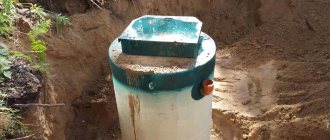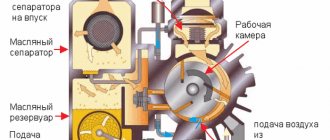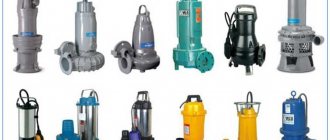Why do you need a compressor receiver?
In addition to storing air, the receiver, included in the pneumatic line with the compressor, performs other important functions:
- Equalizes pressure and eliminates peak loads that occur when several compressed air consumers are simultaneously connected to the compressor;
- Neutralizes pulsations, which negatively affect the operation of compressor equipment. The presence of pulsations is more important for piston compressors than for screw ones. This is due to the operating principle of piston units and their design;
- Cools compressed air and removes condensation from it, which harms equipment and leads to corrosion of internal components.
Advantages of dry storage tanks.
The ideal ratio of wet and dry air in the air system is 1/3 wet air and 2/3 dry air. Without a dry storage tank, the dehumidifier is at risk of accumulating too much condensation during periods of high load as the system attempts to draw in more air than the dehumidifier can produce. If the dryer is overloaded, water may enter the compressed air system. The only example where a dry storage tank is not necessary is in systems with constant air flow.
Purpose of the air collector or why do you need a receiver in the compressor?
Among all types of installations designed to compress various media, piston and screw units are most widespread. The former compress air due to the reciprocating movement of the piston. In this case, a vacuum or an increase in pressure alternately occurs in the cylinder. As a result, in the case of direct connection, pulsation occurs in the pneumatic system of the enterprise. When operating screw units, this effect is not so pronounced, but is also present.
At the same time, we note that a significant part of pneumatic equipment is sensitive to the quality of the compressed air supply, therefore, with constant pulsation in the system, it quickly fails. The solution to the problem was the use of air collectors, which dampen the surge and ensure a stable supply of compressed air to the tool. However, pressure equalization is an important, but not the only answer to the question of why a receiver is needed in a compressor. In addition, tanks solve other problems, including:
Air accumulation. Using an air collector, you can eliminate the problem of peak loads that arise in an enterprise when a large number of consumers are simultaneously connected. Without using a receiver, this problem can only be solved by replacing the compressor with a more powerful model, which is most often impractical due to the high cost of the units. Additional cooling and condensate removal. In accordance with the laws of physics, during compression the temperature of the working medium increases. After the air enters the plant's pneumatic system, it cools down again. In this case, the moisture contained in it falls out in the form of condensation. This leads to metal corrosion and equipment damage. The receiver solves this problem too. It is built in between the compressor and consumers. A decrease in the temperature of the working environment and condensation occurs precisely in the air collector, as a result, the equipment is reliably protected from moisture. The latter, by the way, is removed from the receiver through a special drain valve. Reduced vibration. Both gasoline and diesel internal combustion engines, as well as electric motors, vibrate during operation.
It is important to note that an increase in vibration leads to an increase in the level of noise pollution in the room, as well as to the destruction of the base on which the unit is installed. The use of an air accumulator with a volume of 500 liters or more can significantly reduce engine vibration.
We have listed the main answers to the question of why a receiver is needed in a compressor. As for other significant functions of the air tank, these include:
- additional cleaning of the working environment from dust and other contaminants;
- increasing the energy efficiency of equipment;
- reduction of compressor on/off cycles;
- reduction of compressed air cooling costs;
- neutralization of turbulence that is formed during gas injection.
As you can see, air receivers solve many problems related to ensuring stable operation of consumers. Practice shows that in many cases normal operation of an enterprise is impossible without the use of air accumulators. And where it is possible to do without them, installing a receiver reduces operating costs, extends the service life of equipment, and increases the efficiency of equipment.
Note! In telling why a receiver is needed in a compressor, we did not pursue advertising purposes. The main objective of this article is to provide you with the most detailed information about air accumulators
Should I buy a receiver for the compressor or not? Each user makes this decision independently. For our part, we are ready to advise you on all issues. If after reading the material there are still any uncertainties, contact our specialists for additional information or assistance in choosing a receiver.
Prepared by: Dmitry Zaporozhtsev
Air vents and air collector for the heating system - principles of operation
How many city residents suffer every year from the fact that the heating system in their multi-storey buildings does not want to start during the heating season. The cause of such an annoying problem is usually air accumulation in the pipes of the system.
To avoid the appearance of air bubbles in the pipes, which can cause great harm to the elements of the system, an air vent or air collector for the heating system is included in it.
Where does the air come from?
Air enters the heating system in different ways. This happens, for example, when the system is filled with water for the first time. Air penetrates through poor-quality seals. Also the reason is water replenishment, etc. So, air vents in the heating system are necessary.
Fresh water contains a particularly large amount of oxygen. It begins to stand out with a decrease in pressure and speed of movement.
Air is released through the air valve in the heating system, which protects the system from damage.
Types of air vents.
Air vents for heating systems can be divided into two large groups:
Automatic air vents in the heating system are installed in “critical” places - where air is most likely to accumulate. For example, in the knees or at high points. Manual air vents for heating systems are mounted on radiators.
The choice of one or another air vent design depends on the specific operating conditions. Length of system pipes, for example.
After all, if many manual air collectors are installed on the perimeter of the system with a very large total length of pipes, it will not be easy to bleed air by bypassing all devices.
Read also: Stabilizer 78l05 connection diagram
Obviously, it is more expedient to install automatic air vents in the heating system in this case.
Places for installing air collectors
If we are talking about an open system, air is removed from it through the expansion tank. In the case of a system with forced circulation, removal is carried out in the following ways:
- Pipes with coolant are laid so that the rise from the main riser to the remote ones is ensured. Water and air must move in the same direction.
- Air vents for heating systems are installed at the highest points of the system.
- The air collector for the heating system is installed in places where gases are most likely to accumulate. Better on every heating device, especially if they are aluminum radiators.
A little about the design of the air collector
Although the automatic and manual air collectors differ in design, as can be seen from the names of the devices, the principle of their operation is the same - the air is released through the vent valve of the heating system.
Air accumulated in the pipes of the heating system can prevent the normal passage of coolant through them. The formation of “plugs” sometimes even leads to a complete cessation of fluid circulation, resulting in a rupture of the jet. Air causes destruction of the internal walls of pipes, as it causes corrosion to form on them. In addition, the formation of air cushions is sometimes accompanied by a lot of noise.
It is better, of course, to think about how to remove gas accumulations from the pipes of a heating system at the system design stage.
Air enters the system because, for example, some of it remains in a free state when water is supplied to the pipes, or when there was an error in the drawings according to which the system was manufactured. In this case, air enters with its suction. The gas also comes with water that feeds the system.
For one ton of cold ordinary tap water there is more than 30 tons of air. When the temperature of water increases, the volume of gases dissolved in it is seriously reduced. Where the pressure under which hot water is located is almost the same as atmospheric pressure, an additional volume of gas that is dissolved in it becomes free.
Air dissolved in water is more dangerous for pipes made of steel than atmospheric air in terms of the risk of corrosion due to it. After all, it contains 10-12% more oxygen. By the way, corrosion, in turn, also leads to the appearance of air in the system. For example, during the oxidation of one cubic centimeter of Fe, up to 1 liter of H can be released.
In systems where the coolant is pumped by a pump and the distribution is from the top, the air is bled through air collectors that are mounted on the risers that are furthest away.
The supply line rises to such a riser, so air and water move in the same direction, and gas is discharged.
If we are talking about lower wiring, the gas is released through the air line of the risers and an ordinary flow-through air vent.
More on this topic on our website:
- A heating system with a heat accumulator - what it is and how it works. Heat accumulators have been used in everyday life for a long time. Mainly, a heat accumulator for a heating system is installed together with heat generators.
- How electric heating convectors with a thermostat work With the onset of the first frost, people, not wanting to turn on the gas in their apartment, and some without such an opportunity (who have centralized heating), try to heat it.
- Polypropylene pipes for heating - price and which ones to choose When carrying out processes directly related to the installation of a heating system, experts recommend using polypropylene reinforced pipes for heating, the cost of which is quite high even in difficult financial times.
- Heating pipes - which ones are best to choose for a private home The main link in the distribution of heat in a home are pipes. The ability of pipes to move coolant from the boiler plant to the heating radiators is, in fact, fundamental - this follows.
Air vents and air collector for the heating system - principles of operation: 1 comment
Attention! Before starting the heating system, you need to slightly open the cap on top of the air vent.
“>
Recommendations
We recommend that you read these tips:
- The tank must be cleaned inside and out, otherwise progressive corrosion will create a hole. Sandblasting is one of the most effective and simplest cleaning methods. You can create a sandblasting chamber with your own hands with relative ease.
- Before work begins, the body elements are straightened. You can go the standard route and use a hammer, hoods, spotter and then paint the body, but the developed PDR technology helps eliminate damage without painting.
- Be sure to paint with a spray gun after applying the primer. Acid primer for cars is extremely effective, but has features of operation and compatibility with other materials.
- Before painting, all adjacent elements are either dismantled or covered, especially glass. If paint gets on glass, there is a risk of damage to the material during the removal process. A car glass repair kit will help restore glass from most damage. Car roof rails are difficult to dismantle; it is better to cover them with film and wrap them with tape.
Schematic diagram of operation
In general, the operation of the receiver can be described as follows.
- Using the inlet pipe, air from the compressor is supplied to the tank, where it accumulates until the required operating pressure is reached.
- During the accumulation process, the air cools, as a result of which condensation accumulates at the bottom of the tank - thus, additional drying of the working environment is carried out, which helps reduce the effect of corrosion on all elements of the system. The condensate that collects at the bottom of the tank is drained through a special tap.
- When the required pressure is reached, compressed air enters the outlet pipeline and is supplied through it to the connected pneumatic tool.
Receiver - sump
When the compressor operates for a long time, the air supplied through its discharge pipe has an increased temperature in contrast to the ambient temperature. Therefore, when it comes into contact with the metal surface of the container, it condenses into water. Moreover, the compressed air pumped by a piston-type compressor often contains fine droplets of oil. All that moisture and oil won't do any good to the compressed air line or the air tools. They linger at the bottom of the receiver and are easily removed through the condensate drain valve, which is located at the lowest point of the container. So, the first and simplest purpose of the receiver is as a sump that cleans compressed air from unnecessary impurities.
Selecting an air receiver
Purpose of the air receiver
Air receiver
- Maintaining constant pressure in the pneumatic system in cases of uneven consumption of compressed air by pneumatic tools
- Smoothing pulsations when supplying air to pneumatic equipment
- Maintaining normal operation of the compressor unit
- Reducing the number of compressor bypasses
- Compressed air cooling
- Drying compressed air by collecting and removing condensate from it
- Supplying additional air volume when short-term consumption exceeds the compressor's potential.
Any pneumatic system must be equipped with a receiver, but its selection must be approached very responsibly.
Receiver selection
The air receiver is selected depending on the specific task facing the pneumatic system. The parameters of the air collector are calculated using special formulas. The following factors are taken into account when calculating:
- compressor unit performance
- type of control system (mechanical or automatic)
- requirements for the quality of compressed air (the need for drying, removal of oil vapors, moisture, solid particles)
- The method of producing compressed air is to use a piston or screw type compressor. Pneumatic systems that use a piston compressor require larger volume receivers than systems with screw installations.
If an air receiver is selected at a time when there is still little information about the future compressor system as a whole, then the only parameter without which it is impossible to select the best option is the compressor performance. In this case, the volume of the air collector should be equal to:
- for piston compressors - installation productivity increased by 20%
- for screw compressors, only 30-35% of the installation’s capacity is sufficient, since the idle mode does not have a negative effect on screw structures.
Since some pneumatic systems can use not one, but several compressor units at once, it is permissible to equip such a system with only one receiver. The minimum size of such a receiver should be calculated based on the parameters of the compressor with the highest performance.
It should be noted that an approximate calculation of the receiver volume based on only one indicator, that is, compressor performance, can lead to inaccuracies and a decrease in the efficiency of the pneumatic system. Therefore, it is always better to use the help of our company’s specialists, who have extensive experience and will help you choose the right air receiver, taking into account the characteristics of the compressor unit, pneumatic equipment and its operating conditions.
ALUP receivers
Receivers from the German company ALUP are in great demand in many countries around the world. This manufacturer offers vertical receivers made from high-quality materials. This:
- painted receivers that can withstand a maximum pressure of 11 to 15 bar, with a volume of 200 to 5000 liters, designed for a service life of 10 years
- galvanized receivers that can withstand pressures of 11 and 12 bar, with volumes from 200 to 3000 bar. These air collectors can last 25 years, thanks to the galvanized body, which is not subject to oxidation and corrosion.
Most models are equipped with a pressure gauge and a safety valve and can be used both indoors and directly outdoors.
The main role of the compressed air storage tank.
The main purpose of air receivers is to accumulate and store compressed air, equalize and maintain pressure in the system. The presence of an air storage capacity smoothes out moments of peak loads lasting up to 30 seconds. Such pulsation is present almost constantly in pneumatic systems. This can be any type of production, from sandblasting to the use of sprayers. Air receivers work similar to a battery. By storing compressed air, they allow a smaller compressor to be used for a more complex task, much like a battery storing energy.
Receivers also help stabilize compressor control, eliminating short cycling and overpressure. If the receivers are too small or missing, the compressor will run quickly, leading to various problems.
The air reservoir acts as a second heat exchanger - while the air passes through the receiver, its temperature drops by about 10°C.
Design and principle of operation
To answer the question of why a receiver is needed in a compressor, we should take a closer look at the features of this device and the principle of its operation. The main structural elements of the air collector are:
- a sealed container containing compressed air;
- a safety valve designed to bleed the working medium if the specified pressure parameters are exceeded;
- a pressure gauge with which to control the pressure in the air collector;
- tap used to remove condensate;
- inlet and outlet pipes, through which the receiver is connected to the compressor and pneumatic system.
The operating principle of the equipment is as follows. Through the inlet pipe, the working medium, compressed by the compressor, enters the container, where it reaches the required pressure. At the same time, excess moisture settles on the walls in the form of condensation, which contributes to additional drying of the air. After this, the compressed gas is supplied through the outlet pipe to the pneumatic system of the enterprise or to a pneumatic tool associated with the receiver.
Equipment examples
- Model:
DHT 3000.40 - Power:
l/min - RUB 1,529,975
- Model:
LV 911 - Power:
l/min - RUB 152,395
- Model:
RV 110/10 - Power:
l/min - 14,300 rub.
All models
Purpose and design features of the receiver
The purpose of the air container is directly related to the physical properties of compressed gases. The faster they lose pressure in the event of a flow, the smaller the volume they occupy. A receiver is needed in a compressor to perform the following functions:
- creating the necessary supply of air to supply the consumer without turning on the engine or in case of its unexpected stop;
- smoothing out pressure fluctuations, especially characteristic of piston machines;
- ensuring the convenience of regulating the output parameters of the gas coming from the compressor unit;
- reducing vibration, noise, peak load levels;
- collecting moisture and small mechanical inclusions contained in the gas.
Important! Often, the use of large air collectors saves energy consumption due to the rational operation of the electric motor. The compressor tank is traditionally made of corrosion-resistant steel
It is also possible to use certain types of plastic and high-strength rubber for small volumes and pressures. Receivers for mobile installations can reach 100 liters. The dimensions of stationary equipment are not limited by anything and are often measured in several cubic meters
The compressor tank is traditionally made of corrosion-resistant steel. It is also possible to use certain types of plastic and high-strength rubber for small volumes and pressures. Receivers for mobile installations can reach 100 liters. The dimensions of stationary equipment are not limited by anything and are often measured in several cubic meters.
To fill the cylinder and flow air from it, one fitting is enough, but models with a separate gas inlet and outlet work better. In order to control pressure, some manufacturers additionally provide for the installation of a pressure gauge. For large containers this requirement is mandatory. For their inspection and cleaning, hatches are welded in.
The spatial arrangement of the receiver, depending on the convenience of the equipment layout, is selected horizontal or vertical. The first option gives greater stability to mobile units. The second provides better condensate separation and requires less installation space.
Purpose and functions
When air receivers are purchased for direct use, the price of this equipment is not a determining factor. Firstly, price is a relative indicator; the characteristics of an individual model and the safety of its use are much more important.
You should start with what these products are, and only then tell us what the price depends on. They are often called air collectors; in appearance, the devices look like huge tanks to which means for air exchange are supplied.
The main purpose of this equipment is as a container for temporary air storage. Thanks to its use, it is possible to smooth out the pressure during compressor operation. Excess air mass is simply driven off into a separate tank, where it is kept for a certain time. The price of these products is not that high, but they are an important part of ensuring the safety of powerful compressor installations.
Today, there are two main types of these structures. The first is horizontal, that is, the tank is located in the appropriate position. Vertical models are also common; their prices usually do not differ much.
The air receiver operates under increased pressure of several MPa, usually from 2 to 6. This is the reason for such high requirements for the parameters of this equipment; it must withstand increased loads over a long service life.
Many people are interested in the question: what are the differences between an air collector and a receiver? Here are a couple of answers in the table:
| Air collector | Air receiver |
| Volume up to 0.9 m3 | Volume up to 80 m3 |
| Can be used to store air in compressors. | In addition to air storage, it can be used for long-term storage of nitrogen, argon, and many inert gases. |
| No registration required | Must be registered with Gorgostekhnadzor |
In fact, the fundamental difference between the two options is not obvious. The receiver is larger in volume, has a wider application and can be used in various fields. But the price for a large volume will be slightly higher, because the manufacture of the structure required much more metal and technological operations.
What is the receiver for?
The receiver is required for the compressor to perform the following functions:
- The receiver accumulates compressed air, which helps reduce vibrations in the system. This in turn reduces the load on the base and reduces the noise level from a permanent installation;
- Stabilizes the air pressure supplied directly to the work area. In this case, differences in pressure are inevitable, since the operation of any compressor involves the injection and suction phase of air;
- Air purification from condensate. Otherwise, due to the increased pressure, the air humidity would also increase, which would lead to corrosion of the steel surface of the compressor;
- Provides compressed air supply when connecting an additional consumer, as well as during interruptions in the operation of the compressor.
In addition, an additional receiver makes it possible to use the compressor less often, thus reducing energy consumption!
From a design point of view, the receiver is a sealed tank in most cases with a capacity of 50-100 liters. In the case of stationary units, containers up to 500-1000 liters can be used. The device is equipped with condensate drains, air filters and shut-off valves for connection to the working device and the main unit that consumes compressed air, be it a spray gun, nozzle, etc.
Paired with the installation, receivers can be equipped both vertically and horizontally. The first is in most cases used in stationary units, the second - in mobile ones. Each type offers its own pros and cons. For example, horizontal receivers require a shorter pipeline because they are more compact, but vertical ones are much easier to drain condensate.
Serial connection of receivers
One receiver is connected to the compressor, the others, one after another, are connected to the first. This allows for additional purification of compressed air. The disadvantage of this connection is that if one receiver fails, the entire system will need to be disconnected and replaced and/or repaired. In addition, the presence of several air collectors, each of which has its own resistance, reduces the overall throughput of the system. It will be equal to the minimum throughput of one receiver.
Read also: How to replace the plug on headphones without a soldering iron
To summarize, we can say that the use of an additional receiver allows you to obtain compressed air at a stable pressure, without pulsations. In addition, the presence of an air collector in the system makes it possible to use a less powerful compressor than without it to perform the same tasks.
Air collectors
Air collectors are designed to remove air from heating and water supply systems. The diameter of the air collector is significantly larger than the diameter of the main pipeline, which leads to a sharp decrease in the speed of water movement, which, in turn, facilitates the removal of air. Air collectors are installed in places where they are convenient to maintain. To release air from the air collector, it is necessary to install an air release valve or an automatic air vent.
Scope of product application.
Heating and water supply systems. Vertical air collectors are installed at the highest points of vertical main pipelines, horizontal ones - at the highest points of systems on horizontal sections of pipelines.
OJSC “SANTEKHPROM” manufactures A1I air collectors according to the 5.903-20 and 5.903-2 series, as well as according to the Customer’s drawings.
Air collectors are made of standard pipes - housings made of pipes with a diameter (Dн) from 159 to 426 mm. according to GOST 10704-91, nozzles made of pipes with a nominal bore (dy) from 15 to 50 mm. according to GOST 3262-75 and diameter (Ø) from 76 to 159 mm according to GOST 10704-91.
Air collectors A1I series 5.903-2 and 5.903-20 can be manufactured with both elliptical and flat bottoms. Air collectors with elliptical bottoms are designed for use in systems with an operating pressure of up to 1.2 MPa, air collectors with flat bottoms are designed in two versions: for use in systems with an operating pressure of up to 0.6 MPa and for systems with a working coolant pressure of up to 1.2 MPa.
Horizontal flow-through air collectors (1 – with elliptical bottoms, 2 – with flat bottoms)
Independent production of an additional receiver
In some cases, owners of compressor units need to connect an additional air collector. Additional capacity is required when a certain job requires more compressed air than the existing unit can provide. In this case, the craftsmen decide to make an additional container with their own hands.
At the same time, craftsmen consider the best option to be a gas cylinder, which has:
- good capacity (up to 100l);
- relatively light weight (up to 70 kg);
- ability to withstand high pressure of the working environment (up to 25 atm).
The only drawback of gas cylinders is the lack of a faucet for draining condensate. However, many do not consider it shameful to turn off the valve several times a year and, turning the cylinder over, drain the moisture accumulated inside.
Materials and tools
To make a compressor receiver from a gas cylinder with your own hands, the home craftsman will need to have on hand:
- vice;
- welding machine;
- large hammer;
- adjustable wrench;
- hacksaw for metal.
Algorithm for converting a gas cylinder into a receiver
Before you begin making an air collector from a gas cylinder, you need to remove the gas remaining inside it from the latter. To do this, use an adjustable wrench or a hacksaw to dismantle the inlet valve. But remember that when cutting parts of a gas cylinder, the use of power tools is prohibited! After all, sparking during the cutting process can cause an explosion of the gas remaining inside the cylinder.
After the container is emptied, it is completely filled with water. The vessel is left in this state for at least a day, after which the water is drained and the outer and inner surfaces of the cylinder are thoroughly cleaned from dirt and rust using detergents.
Next, a number of operations are performed in a certain sequence:
- return the inlet valve to its place;
- weld the necessary splitters or threaded adapters into the cylinder to connect the pipes;
- the outer surface of the cylinder is painted with paint that can withstand the influence of atmospheric phenomena;
- install a safety valve and a reducer with pressure gauges;
- all components are connected to each other by pipes - experts recommend connecting the inlet and outlet pipes through ball valves;
- a condensate drain is installed in the lower part of the cylinder, the model of which must be selected based on the performance of the compressor.
Checking the receiver
Before you start using the compressor, you need to make sure whether it is capable of working in conjunction with a homemade additional receiver. To do this, turn on the device and let it run in idle mode for half an hour. At the end of this time, the pressure difference is measured.
To summarize, the receiver is a very convenient and useful device, which is in demand not only in production, but also on the farm for its ability to ensure an uninterrupted supply of compressed air to the pumping equipment even when the compressor is turned off. Such an air collector can be purchased at points of sale, based on the parameters of your compressor installation. But you can also make it yourself, having at hand a gas cylinder, a set of tools and a strong intention.
https://youtube.com/watch?v=Z4M-l-Am5CI
Adjustment and commissioning process
Factory set parameters do not always meet consumer requirements. In most cases, this is due to insufficient compression force at the highest point of disassembly.
The operating range of the pressure switch may also not be suitable. In this case, independent adjustment of the actuator will be relevant.
Standard factory settings: upper limit 2.8 atmospheres, lower limit 1.4 bar. The parameters are monitored visually using a pressure gauge included in the standard pressure switch kit. New models, for example, Italtecnica, have a transparent body and are equipped with a compression scale indicator directly on the relay
To begin setting the operating compression value, you will need to inspect the engraved plate, which indicates the parameters of the electric motor and compressor.
We only need the largest value that the device produces. This indicator indicates the maximum pressure force that can be set on the relay for the correct operation of the entire pneumatic system.
If you set the specified value (in the figure 4.2 atm), then taking into account all factors - differences in power supply, exhaustion of the service life of parts, etc. - the compressor may not reach the maximum pressure, and accordingly it will not turn off.
In this mode, the working elements of the equipment will begin to overheat, then deform and eventually melt.
The maximum ejector value must be taken into account when determining the maximum relay value. This indicator should be less than the rated pressure of the compressor. In this case, all elements of the system will work uninterruptedly
For reliable operation without shutdowns, it is necessary to set the highest shutdown pressure on the relay, which does not reach the nominal value engraved on the compressor, namely 0.4-0.5 atm lower. According to our example - 3.7-3.8 atm.
The pressure limits at which the compressor is turned on/off are regulated by a single bolt. In order not to make a mistake with the choice of direction for increasing/decreasing, arrows are placed on the metal base
Having determined the level that will be set, it is necessary to remove the relay housing. Under it there are two adjusting elements - a small and a large nut (in Figure 1.3).
Nearby there are arrow indicators for the direction in which the twists will be made - thereby compressing and unclenching the spring mechanism (2.4).
A large screw clamp and spring are provided to control compression settings. When twisted clockwise, the spiral compresses - the compressor switch-off pressure increases. Reverse adjustment - weakens, and accordingly, the pressure level for shutdown decreases.
It is worth remembering: by increasing the shutdown compression strength, we are changing the factory settings, which were set taking into account the regulatory requirements for the operation of the equipment. Before making adjustments, check the technical documentation of the device so as not to exceed the limits stated by the manufacturer
When reproducing settings, the receiver must be at least 2/3 full.
Having understood the purpose of the elements, let's proceed:
- To ensure the proper level of safety, we turn off the power supply.
- Changing the compression level of the springs is done by turning the nut several turns in the required direction. On the board, near the large-diameter adjusting screw, according to the standards, there is a symbol in Latin letters P (Pressure), a smaller one - ΔР.
- The adjustment process is monitored visually on a pressure gauge.
For convenience, some manufacturers place the adjusting fittings for changing the nominal value on the surface of the device body.
Routine work before starting the compressor
Having assembled a compressor for a spray gun or other work with your own hands, you should test it. However, before this, as well as subsequently, before each launch, certain actions should be performed, namely:
- check the tightness and reliability of all connections;
- Visually inspect hoses and tubes for cracks or breaks.
Such problems are not uncommon when the pulley touches the hosePHOTO: sharx.org
After the compressor engine has started, it is necessary to check the gearbox setting using a pressure gauge. The answer to the question of how to set the compressor to the desired pressure is simple. It is set using a regulator installed on the pressure gauge by turning the handle left and right. And the maximum air pressure in the compressor receiver from the engine is regulated by an emergency valve, which is activated when the permissible threshold is exceeded.
This pressure gauge allows you to adjust the pressurePHOTO: bigsklad.rf
And this one will require the installation of an additional regulator PHOTO: conrad.ru
Also, before starting, it is worth checking the inlet pipe through which air enters the supercharger. The air filter installed on it must be clean so as not to complicate the operation of the engine with unnecessary load.
How to choose an air receiver?
Compressor equipment is now widely used in various fields of production: mechanical engineering, chemical, metalworking industries, etc.
The choice of an air receiver (air collector) must be approached with due attention: the container is intended for compressed air, therefore high-quality materials and components are required, as well as appropriate certificates for equipment. Purchasing receivers from dubious domestic “fly-by-night companies” or Chinese companies threatens to result in the loss of a larger amount of money than purchasing units from our company
Purchasing receivers from dubious domestic “fly-by-night companies” or Chinese companies threatens to result in the loss of a larger amount of money than purchasing units from our company.
Cheap products from China or Russia ultimately turn out to be unreliable, they are not guaranteed, and there may be problems with registering air receivers with Rostekhnadzor.
Types of receivers and their scope of application
The air collector is used as part of compressor stations (CS), nitrogen, ammonia and refrigerant installations for storing and producing compressed air, nitrogen, oxygen, etc.
Air receivers are:
- linear. They are installed between the control valve and the condenser. Such receivers serve to compensate for differences in the liquid filling of evaporative equipment during heat load surges. By freeing the condenser from liquid, they create a flow of liquid agent moving evenly to the control valve. The refrigerant, maintained at the same level, becomes a hydraulic seal that prevents steam from flowing into the evaporator.
- protective. They are installed below a certain level where the evaporation system equipment is located. Designed for draining liquid from liquid separators and evaporators in pumpless refrigerant supply systems.
- drainage (RD or RDV). Such receivers are needed to drain liquid refrigerant from pipelines and refrigeration units during their repair and during their operation. circulation (RCZ and RCC). Reservoirs that are filled with liquid refrigerant are designed to ensure continuous operation of the circulation pump that supplies liquid to the evaporators.
- Circulating air receivers are used in pump-circulating units for supplying liquid refrigerant to evaporative systems. Air drainage receivers RD are used as protective, drainage, linear and circulation receivers; RDV vertical air receivers are used as circulation and protective receivers.
You can find out the prices for air receivers sold by AIRTECHNO LLC in the price list.
We make an air collector with our own hands and materials for work
The materials for the air receiver depend on the purpose for which you want to make it yourself. If you need this device for a spray gun, then a piece of pipe or a large plastic bottle can be used as a container. The main thing when making this device with your own hands is not to use glass containers. They do not have great strength, like metal, and are not capable of stretching polyethylene.
If this element is required for the installation of a car compressor, then you can use a fire extinguisher cylinder. Here's why you should choose it:
- The cylinders have sufficient volume, usually up to 10 liters.
- Due to the strong walls, they can withstand pressures of up to 150 bar, and this is quite enough for full operation.
- Making such a device with your own hands from a cylinder is not a problem. This is a ready basis for future work.
Now you need to unscrew the standard valve from the former fire extinguisher and install an adapter in its place. It is better to wrap this element with fum tape; it will be very useful in further work.
Next, the crosspiece from the water supply is connected to the adapter. After this, careful insulation is carried out with sealant, and for reliability, you can once again wrap the structure with tape. As a result, you have made a small air collector with your own hands; you can safely connect it to the equipment.
What type of air collectors are used for heating systems?
Air in the heating system can disrupt its operation; in addition, excess oxygen becomes a catalyst for corrosion processes. Although it does not get into the coolant so often, additional devices for its removal will not be superfluous. In this case, special containers are used in which it is collected and then released using a valve. Thus, not only excess air is removed from the heating circuit, but the pressure in it is also normalized.
Receivers for dumping excess air masses in heating circuits of buildings
Design features
Typical sizes and designs of air collectors are developed based on the diameters of the lines. Let's take a closer look at their features and functionality:
- Products can have a flat or elliptical welded bottom.
- It is made blind at the top, and tubes for supplying and discharging coolant, as well as a pipe for air discharge, are welded to it at the bottom.
- There are vertical and horizontal structures. You can connect them yourself.
- They differ in their installation location on the pipeline:
- vertical is mounted at the highest vertical point of the contour;
- the horizontal one is mounted at the highest horizontal point of the contour.
- Vertical products are smaller in area and are more convenient for staff to work with.
- Horizontal – facilitate control of parameters and maintenance of pressure gauges, as well as other equipment placed on them.
Vertical type product with elliptical welded bottom
The accumulated air is released manually or automatically. The price of products depends on many parameters, such as dimensions, and therefore varies within different limits.
The photo shows horizontal containers with flat bottoms
There are two main ones, which we will discuss below:
- The automatic system is more convenient to use; during its operation, regular maintenance of the receiver is not required . In such products, a release valve is installed and internal hydrostatic pressure is used for control.
Container with automatic pressure release
The operating principle is related to the level of the float in the float chamber. When the air in the container lowers it, at a calculated moment it exits through the hole, which is opened by the release valve. As soon as the coolant pressure becomes large enough, the valve closes.
- The manual option must include a specially calculated schedule that regulates the time for opening the valve and releasing air masses throughout the entire section of the heating circuit of a residential building.
Read also: Cutting tiles with an electric tile cutter
Product with manual pressure relief valve
Air collection containers are:
- Flow-through - they are built into the pipeline. In a horizontal position, the air is expelled involuntarily by the movement of water into the upper part of the receiver. The water in such flow-through horizontal air collectors never freezes, so the instructions allow the installation of these products in unheated rooms. The dimensions of the receiver are significantly larger than the main pipeline, allowing air to concentrate at the top of the receiver. (See also the article Electric heating convectors: features.)
Installation diagram of a horizontal flow receiver in a heating pipeline
- Non-flowing - connected to the pipeline by an outlet, which is discharged separately. In this design, air bubbles may not enter the branch, simply passing by.
The difference between flow and non-flow receivers
Any types of products are designed for the following parameters:
- operating coolant temperature – up to 150˚С;
- pressure in the circuit is 0.6 MPa and 1.2 MPa.
Tip: make sure that safety valves are installed in the products for emergency air release.
In addition to separate receivers, centralized air removal is used using an air pipeline. In this case, an air loop is designed for discharge, in which a vertical air collector is installed. It automatically releases air masses into the expansion tank.
Vertical receiver installation diagram
Features of air discharge from the heating system
When making a heating system with your own hands, it is necessary to provide a way to remove excess air bubbles from it. Therefore, before choosing equipment, we recommend considering different options for circulating coolant through the circuit. This will allow you to optimally position it and avoid technical errors in the future.
Automatic Valve Operation
The location of the receiver depends on the coolant circulation system in the heating circuit.
- Natural - in this case, the coolant is supplied at an angle to the expansion tank, in which all air bubbles are collected.
- Forced, a circulation pump is used to move the coolant along the circuit. In this case, air should be removed from the furthest risers.
Placing an automatic receiver in a forced heating system
Tip: with lower pipe routing, air masses are removed through an air line or a regular air collector.
Air collectors are important and integral elements of the heating system. Its reliability depends on their correct placement and equipping with monitoring and control devices.

